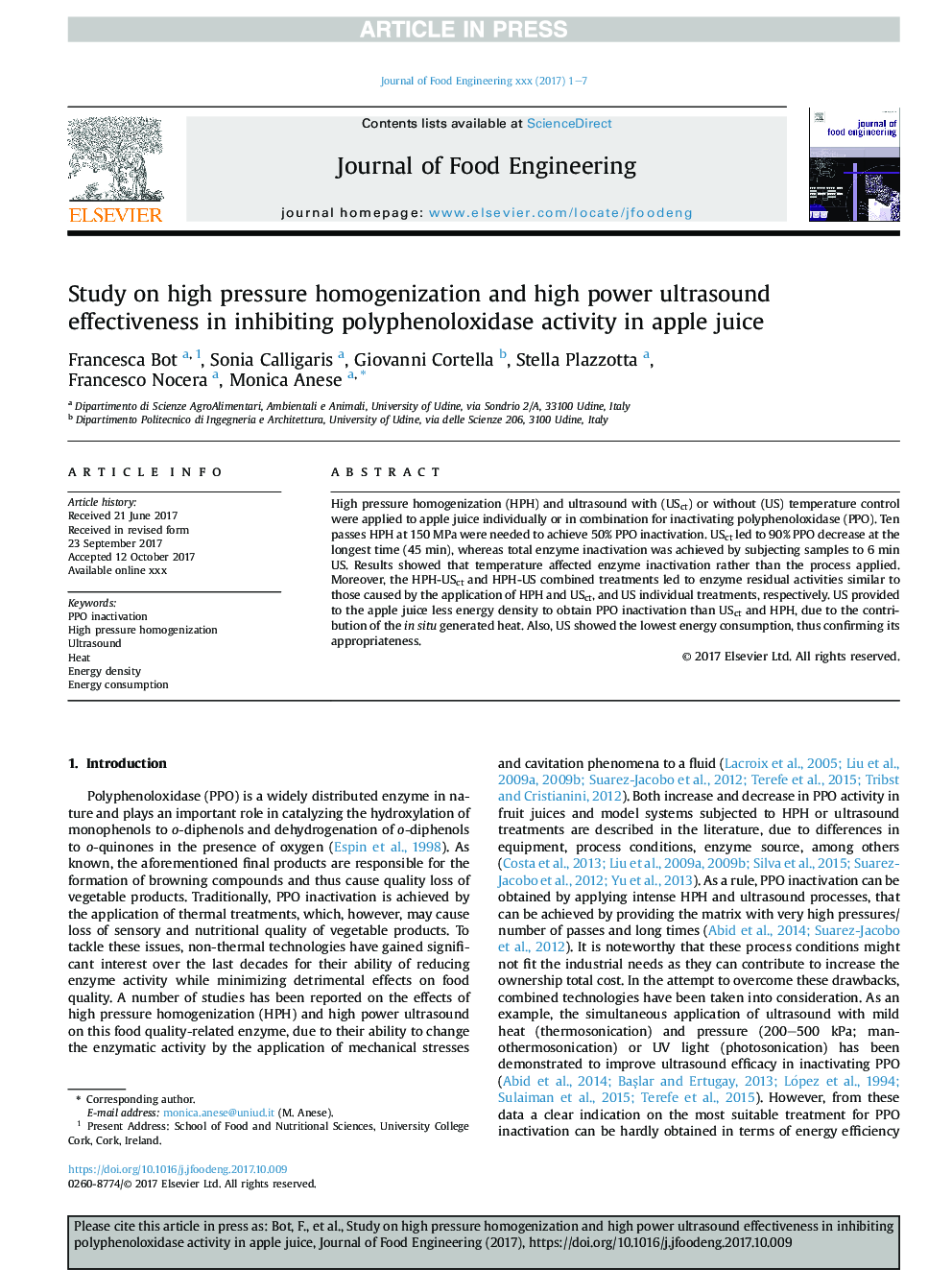| Article ID | Journal | Published Year | Pages | File Type |
|---|---|---|---|---|
| 6664806 | Journal of Food Engineering | 2018 | 7 Pages |
Abstract
High pressure homogenization (HPH) and ultrasound with (USct) or without (US) temperature control were applied to apple juice individually or in combination for inactivating polyphenoloxidase (PPO). Ten passes HPH at 150Â MPa were needed to achieve 50% PPO inactivation. USct led to 90% PPO decrease at the longest time (45Â min), whereas total enzyme inactivation was achieved by subjecting samples to 6Â min US. Results showed that temperature affected enzyme inactivation rather than the process applied. Moreover, the HPH-USct and HPH-US combined treatments led to enzyme residual activities similar to those caused by the application of HPH and USct, and US individual treatments, respectively. US provided to the apple juice less energy density to obtain PPO inactivation than USct and HPH, due to the contribution of the in situ generated heat. Also, US showed the lowest energy consumption, thus confirming its appropriateness.
Related Topics
Physical Sciences and Engineering
Chemical Engineering
Chemical Engineering (General)
Authors
Francesca Bot, Sonia Calligaris, Giovanni Cortella, Stella Plazzotta, Francesco Nocera, Monica Anese,
